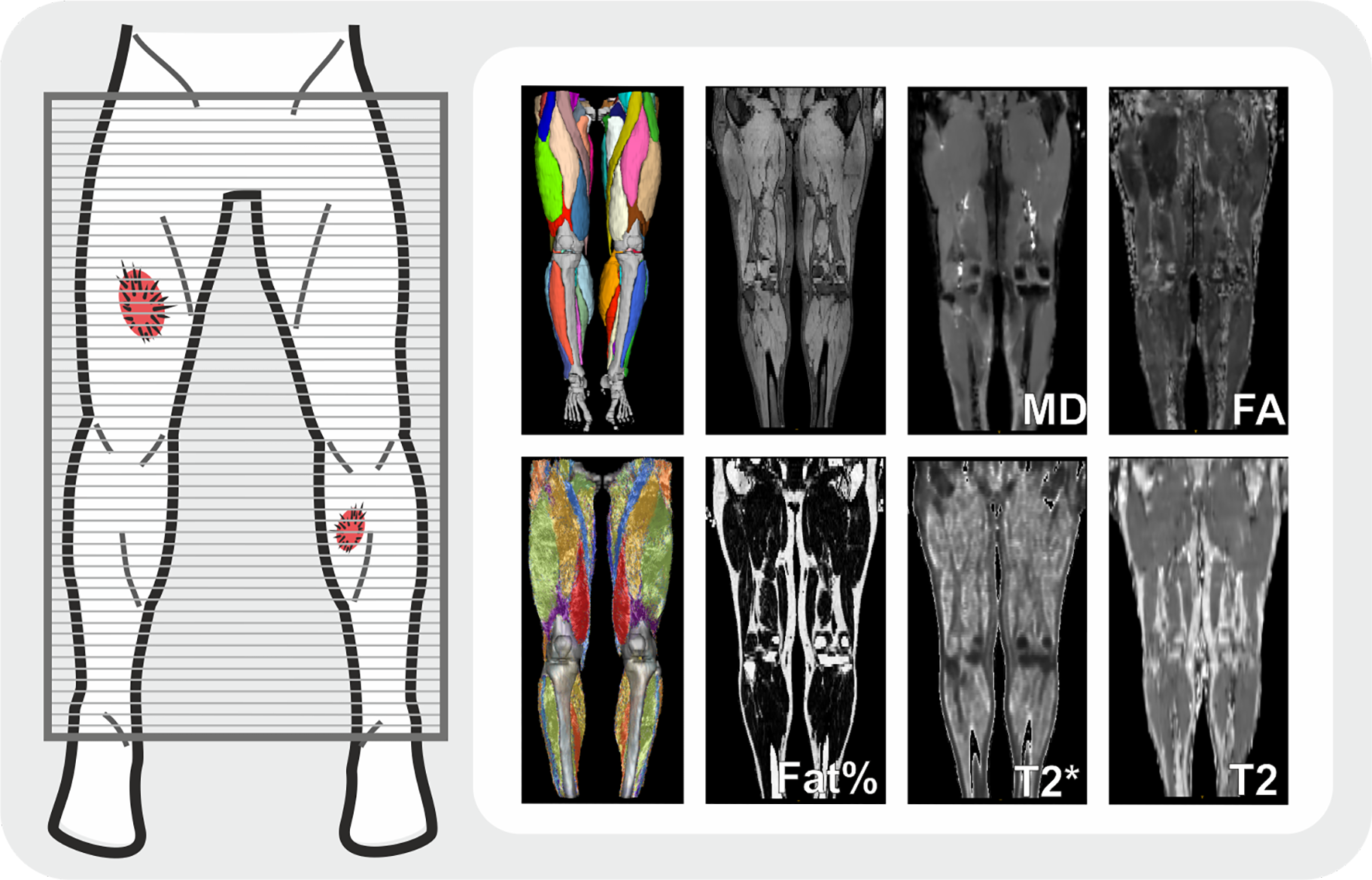Inclusion and data overview.
The motion study
The Motion Study aims to gather data from 160 healthy individuals aged 15 to 65 years, using a combination of bilateral quantitative MRI scans of the full legs and force measurements. The study has three parts: two questionnaires, an MRI scan, and muscle strength measurements.
The first two questionnaires are administered to gather information about lifestyle and daily physical activity. The MRI scan, performed on a 3T Philips Ingenea system, covers the entire legs and takes approximately 45 minutes. The quantitative MRI data acquisition comprises Dixon imaging, T2-mapping and Diffusion tensor imaging, each acquired in 6 overlapping stacks Participants’ legs and feet are immobilized with knee and foot supports to prevent movement during the scan.

The last part of the study involves measuring muscle strength in the right upper thigh using a Biodex System 4 in collaboration with the Children’s Movement Center. The measurement consists of two parts: an isometric measurement to assess muscle strength without changing muscle length, and an iso-kinetic measurement to assess muscle strength while the knee joint moves.
